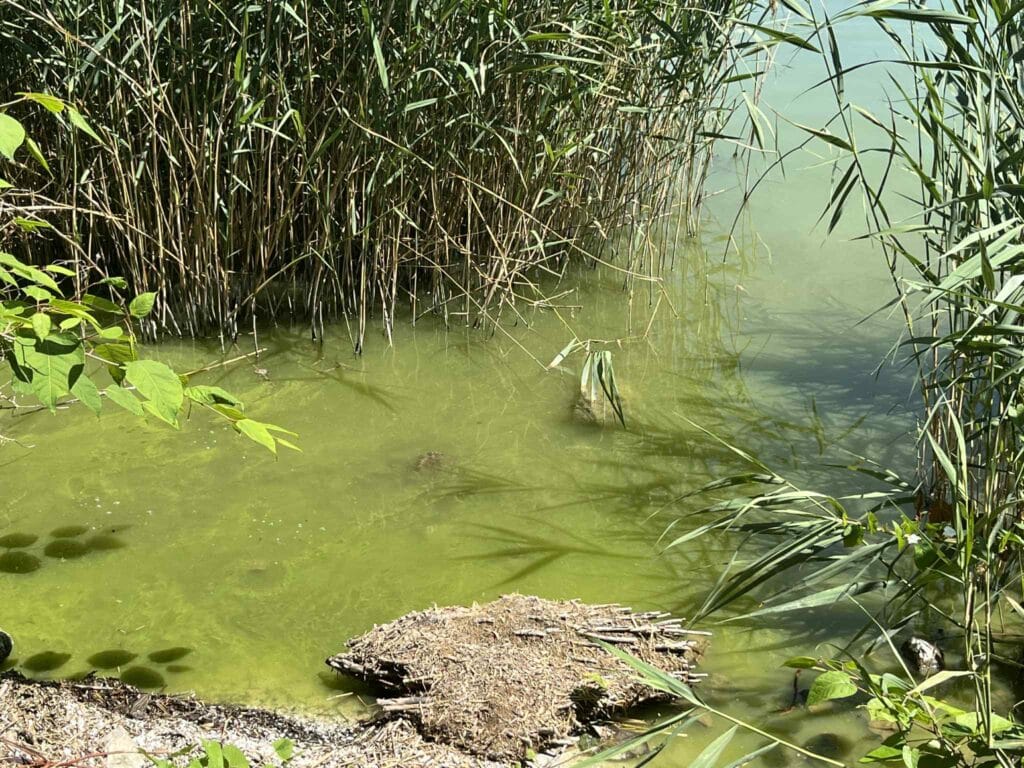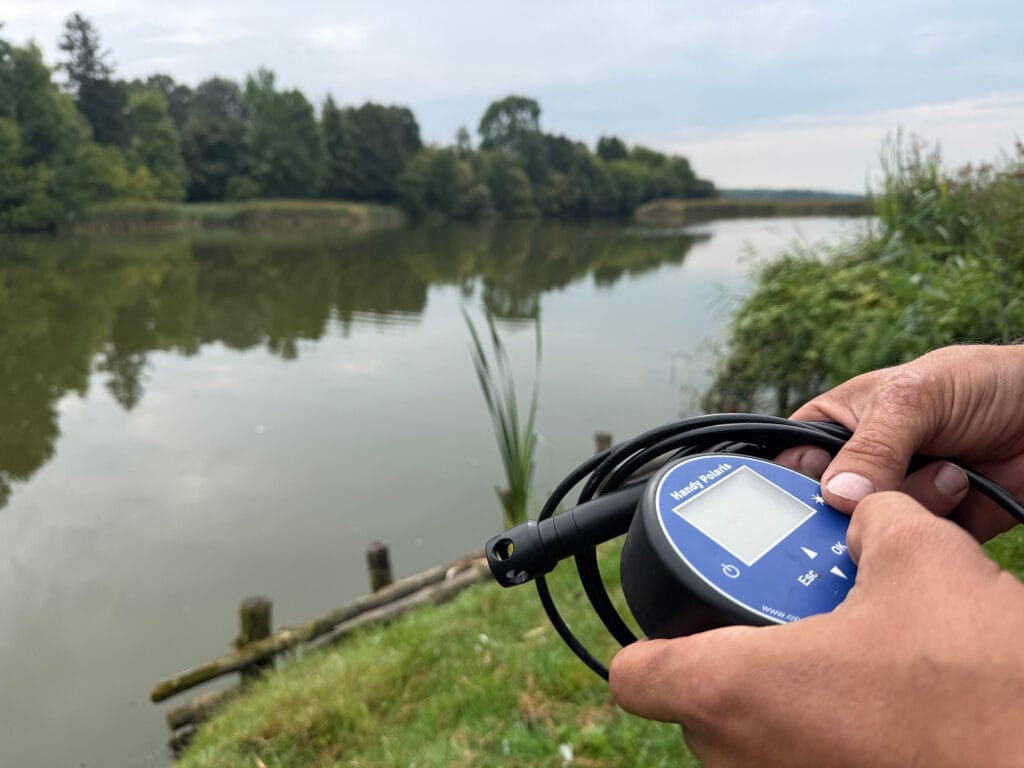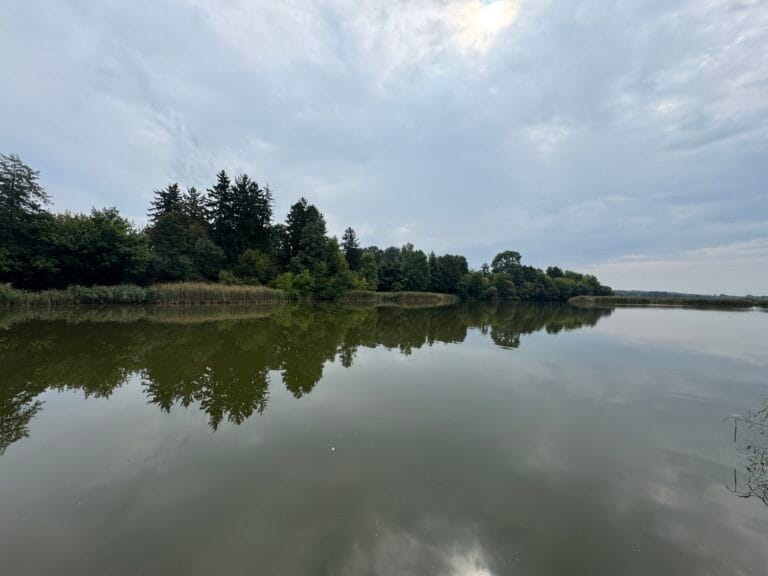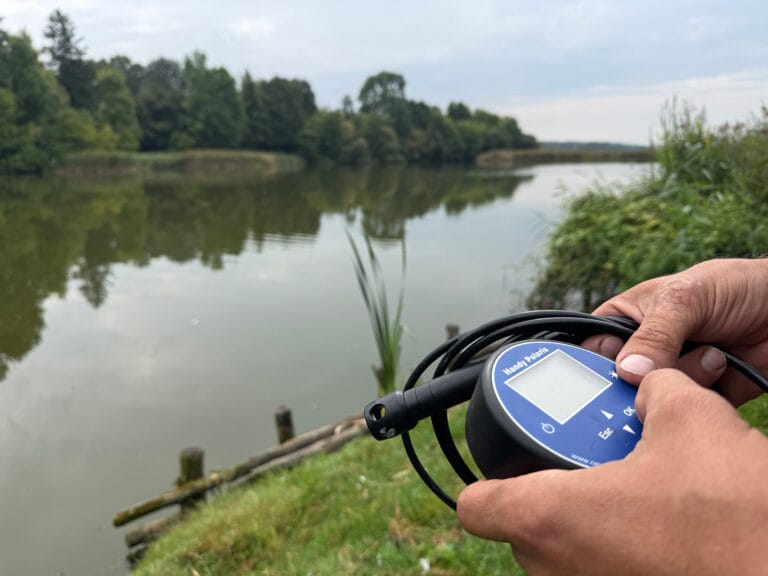A New Approach to Biological Fish Production
Carp farming is one of Hungary’s oldest and most widespread aquaculture sectors. However, not only domestic but also European pond farmers are increasingly facing challenges that were almost unknown in previous decades – such as mass fish deaths and diseases caused by new pathogens. But what could be behind these problems?
According to a study based on practical experience, the main cause is the disruption of the oxygen balance in the water, which often begins unnoticed but can lead to drastic consequences. Excessive organic load (e.g. dead plankton, decaying plants), stagnant water movement, and summer heat trigger anaerobic decomposition – in other words, putrefaction. This process produces toxic gases (e.g. hydrogen sulfide, ammonia), which not only have an unpleasant smell but are also acutely poisonous to fish.
Oxygen – The Invisible but Life-Saving Element
Measurements show that when the dissolved oxygen level in the water drops below 0.5 mg/l O₂, fish go into shock within minutes, followed by mass mortality. This is not always immediately visible – often, the dead fish appear floating on the surface by morning, after plants and microorganisms have completely used up the oxygen overnight.
Prevention Through Fermentation – Not Chemicals
The usual response to such situations is “treating” the water with chlorine, copper sulfate, or water replacement. However, these are only symptomatic solutions and often do more harm than good. More and more experts and practical producers are turning to biological methods. One such approach is the EM technology (Effective Microorganisms), in which lactic acid bacteria and other fermenting microorganisms, including phototrophic bacteria, are introduced into the pond.
These microbes initiate fermentation processes that prevent putrefaction, restore the pond’s microbiological balance, and reduce the toxic effects of harmful gases through electronegativity. The poisoning caused by hydrogen sulfide-rich water that interferes with the uptake of dipole oxygen molecules is neutralized by the catalase enzyme produced by the microorganisms, which helps fish absorb atomic oxygen even at low oxygen levels. This allows fish to survive at lethal oxygen levels as low as 0.1–0.2 mg/l O₂. Furthermore, the mildly alkaline environment created by fermentation is unfavorable for pathogens.
It is important to note that even if agricultural lime – which has an alkalizing effect – is applied weekly, EM fermentation primarily acts locally in the sediment. Therefore, the two processes complement each other: while lime stabilizes the pH of the water column, EM decomposes organic matter in the sediment.

What Does Practice Show?
According to professional experience, in ponds where this technology has been applied:
- The odor of the sediment disappeared, its thickness decreased, and the water color changed from brown-black to yellowish green.
- The fish showed no signs of oxygen deficiency, even during high summer temperatures.
- Fish mortality completely ceased.
The Future of Biological Pond Farming Has Already Begun
Sustainable fish production is not only about profitability — consumers are also becoming increasingly sensitive to natural, antibiotic-free rearing. Carp farming requires a stable and healthy aquatic environment, which EM technology is able to provide. More and more pond farmers recognize that more feed or more chemicals are not necessarily the answer – it is enough to support nature with well-organized biological processes.
Source:
The content of this article is based on the professional study by Balázs Kozák – “Application of EM Microorganisms in Biological Fish Farming” and our own pond management experience.
This Hungarian publication is not yet available in foreign languages, therefore we place special emphasis on sharing its knowledge and practical methods through our English blog articles. Our goal is to make the knowledge of EM-based biological fish farming more widely accessible to pond farmers.
The translation was prepared by ourselves, but we were not able to have it professionally proofread. If you find any inaccuracies or unclear wording, please let us know by email at management@carphusbandry.com



